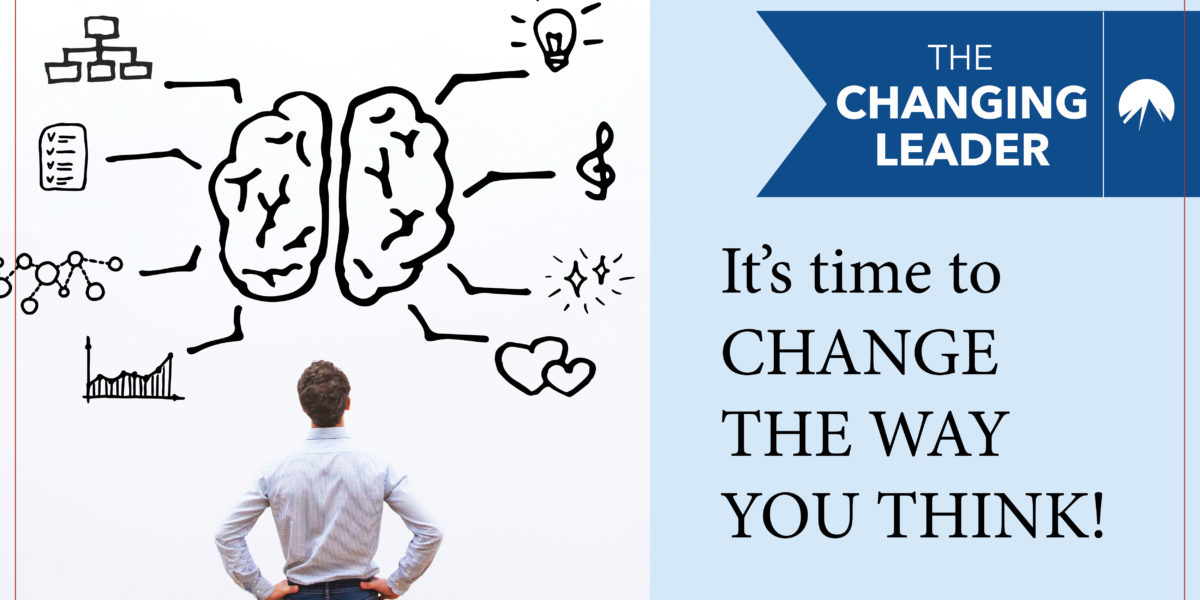Today’s environment calls on leaders to think differently.
COVID-19 has shown us that there is not always a playbook to call upon, highlighting the level of unpredictability that is our workplace today.
But if you look deeper, in many ways COVID-19 has accelerated trends that were already in place – more virtual and hybrid working conditions, online delivery of goods and services, telehealth, remote learning, and the list goes on.
These accelerated changes require people and organizations to respond to the disruption of traditional business models in new ways. People are working on multiple teams to solve the most complex problems; there is a need for more cross-functional work that stretches employees beyond their occupational identities (e.g., “that’s not in my job description”); and we have a need for speed that hierarchy only slows down.
The bottom line is that as our world gets more volatile, uncertain, complex and ambiguous, leaders will need to shift how they think in order to be prepared for the future of work.
3 Ways to Think Differently
#1: Lose Your Occupational Identity
I had the good fortune of interviewing Heather McGowan, co-author of The Adaptation Advantage, in a recent episode of our Future of Leadership podcast. In her book, she states that our tight tether to occupational identity makes it even more challenging to adapt to a rapidly changing future.
It makes sense. Your identity is the story you tell about yourself. “I am a software engineering manager.” “I am a doctor.” “I am a scientist.” (Notice the word am in each statement.)
The challenge is that when we define ourselves (our identity) by our past and current states, education and job titles, we are less likely to adapt to what the future of work may need.
Instead, we must get clear on the personal characteristics that will define our ideal future self and shift our identities to who we will become and to what we are building. As repeatable and predictable roles get augmented or even completely automated by artificial intelligence, we must let go of our occupational identities in order to shape our future.
#2: From Playbook to Experimentation
According to a recent article by McKinsey, companies that move early in a crisis to get a jump on competitors often maintain that lead for years to come. But in times of crisis, there usually isn’t a playbook to guide those early moves. COVID-19 is a great example of that.
Retail stores were forced to innovate on how to get products to customers through online or curbside pickup. Restaurants that depended on in house dining either got creative in what and how they delivered their food, or were crushed by expensive overhead costs like rent. Service providers of all types, from lawyers to educators to yoga studios, had to modify or completely change their business models to adapt to new customer demands.
For many, the best-laid plans that were set at the beginning of 2020 became obsolete and irrelevant.
To make the shift, leaders must learn to change their thinking from primarily looking at similar events of the past and deciding on a course of action instead of experimenting first, observing patterns, learning and then adapting. To do that well, they must let go of power and control, embrace emergent ideas that were not part of the original plan and value diverse perspectives.
#3 Learn to Use Different Mindsets
We all have a comfort zone we rely on, mindsets that come most naturally for us. For example, you might have an outgoing mindset that allows you to establish and maintain relationships. However, the current situation might call for you to be resolute, standing your ground in the face of opposition.
Different situations at work call for leaders to respond in different ways.
Interpersonal agility, a term I coined in my book Unite! The 4 Mindset Shifts for Senior Leaders, is the ability to engage with a broader spectrum of constituents who have different needs and competing priorities.
In the face of increasing complexity, leaders must move their thinking outside of their comfort zone to take on a different mindset that is more socially and emotionally appropriate for the situation and circumstances.
Change How You Think Toolkit
It’s time to reset how we think, moving away from traditional approaches to more agile methods – to rethink our occupational titles and identity, to change our thinking when solving complex problems and to stretch to new mindsets that are more appropriate for the situation.
We invite you to download our Change Your Thinking Toolkit below. This practical framework will help you reset your thinking so that you can emerge from any crisis stronger than ever.

